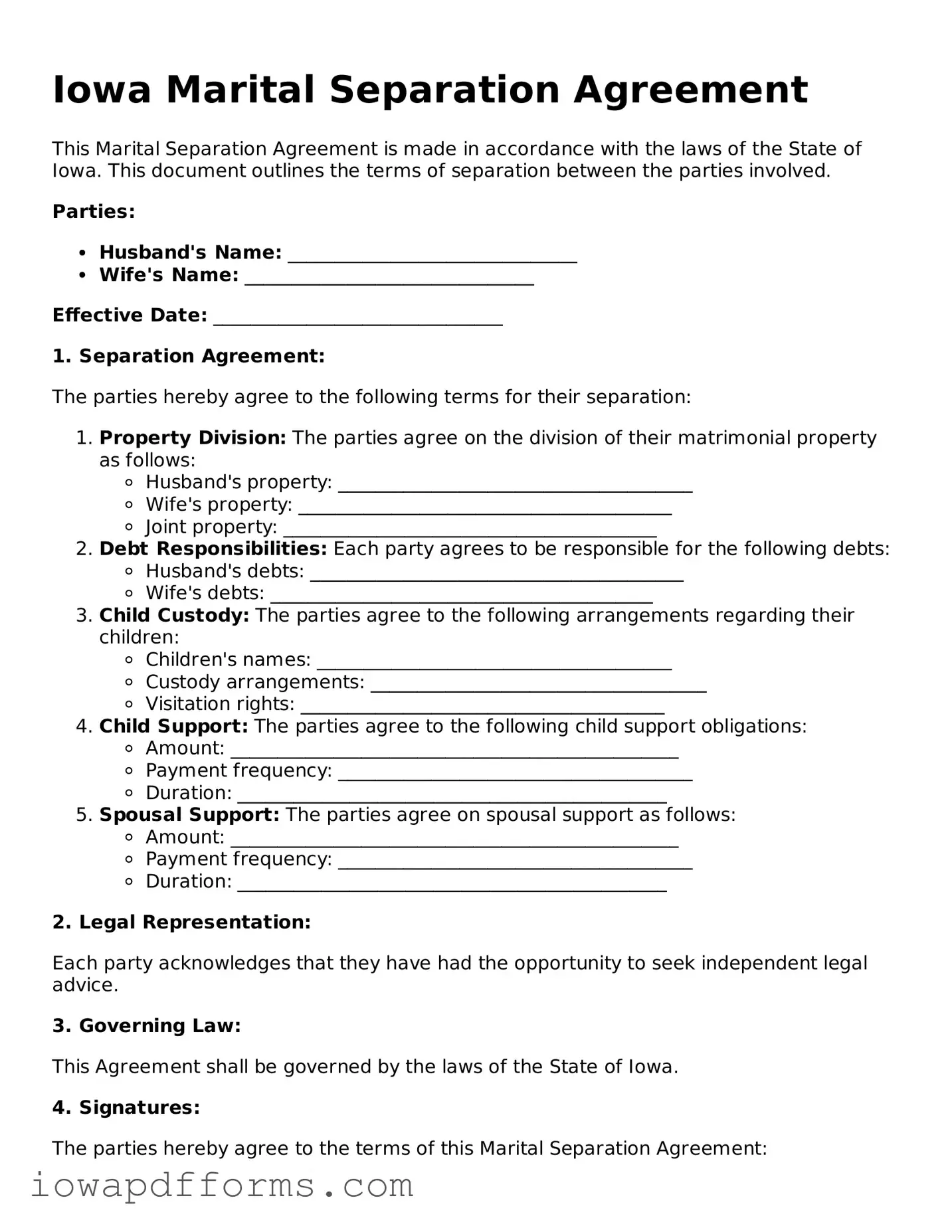The Iowa Marital Separation Agreement is similar to a Divorce Agreement. Both documents outline the terms of the separation between spouses. They address issues such as asset division, child custody, and support payments. While a Divorce Agreement finalizes the marriage, a Marital Separation Agreement allows couples to live separately without ending the marriage. This can provide a way to resolve disputes amicably while maintaining the option for reconciliation.
Another document that shares similarities is the Legal Separation Agreement. Like the Marital Separation Agreement, this document allows couples to live apart while remaining legally married. It covers similar topics, including property division and financial responsibilities. The key difference lies in the legal status; a Legal Separation can be a formal process recognized by the court, whereas a Marital Separation Agreement may not require court approval.
In addition to these agreements, individuals engaging in Texas real estate transactions may find it beneficial to familiarize themselves with the Texas Real Estate Sales Contract form, as it sets forth the terms and conditions for property sales, ensuring a clear understanding between buyers and sellers; for more details, you can refer to Texas Documents.
The Cohabitation Agreement also resembles the Iowa Marital Separation Agreement. This document is used by couples who live together but are not married. It outlines the rights and responsibilities of each partner regarding property and finances. Both agreements aim to clarify expectations and protect individual interests, although the Cohabitation Agreement is typically used in non-marital relationships.
A Prenuptial Agreement is another document that has some similarities. This agreement is created before marriage and details how assets will be divided in the event of a divorce or separation. While the Iowa Marital Separation Agreement focuses on the terms of separation after marriage, both documents help couples navigate financial matters and protect their interests.
The Postnuptial Agreement is also akin to the Iowa Marital Separation Agreement. This document is created after marriage and serves a similar purpose to a Prenuptial Agreement. It addresses the division of assets and responsibilities in case of separation or divorce. Both agreements aim to provide clarity and security for both parties, even if the relationship remains intact.
Lastly, the Child Custody Agreement bears resemblance to the Iowa Marital Separation Agreement. This document specifically focuses on the custody and care of children following a separation. While the Marital Separation Agreement covers broader issues, the Child Custody Agreement hones in on the well-being of children, ensuring that their needs are prioritized during the separation process.
